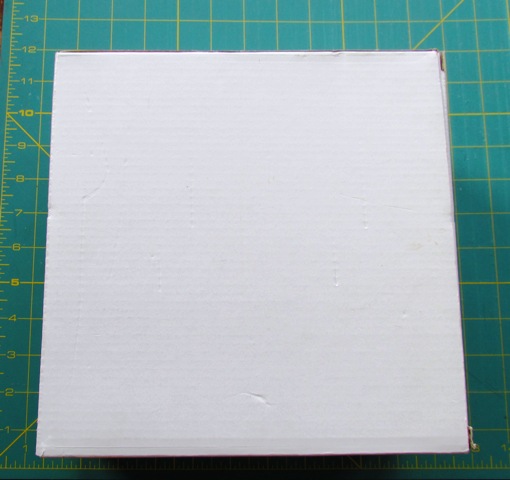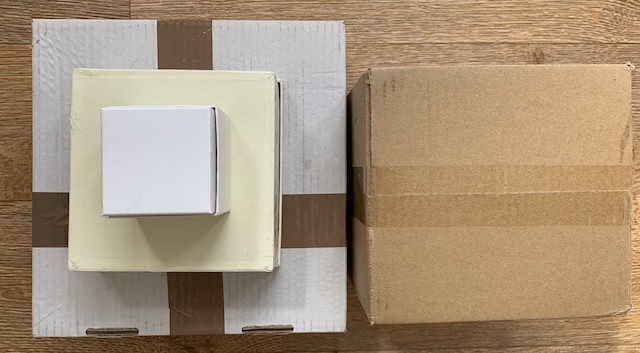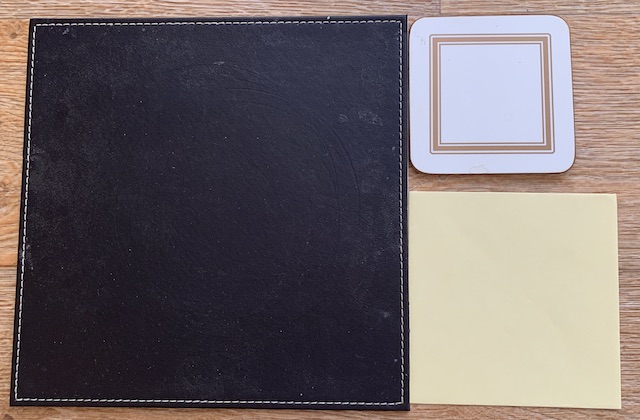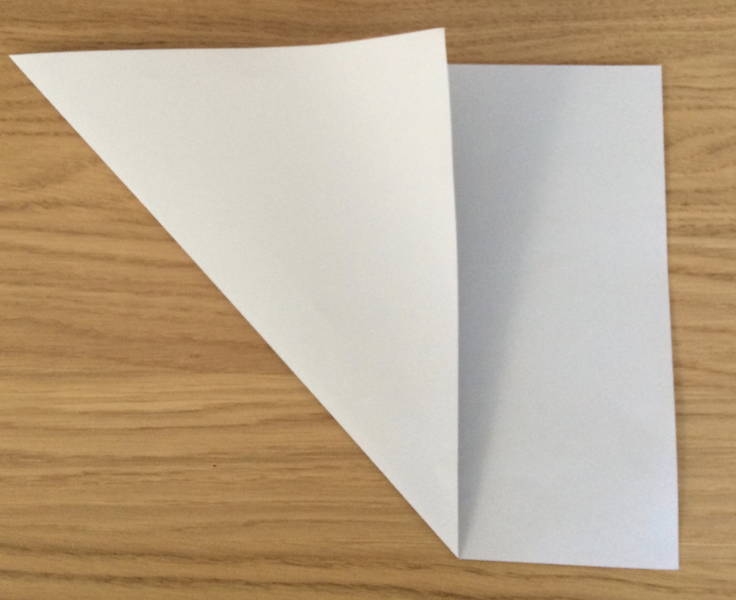Making a square pattern
for sewing or crafting.

A square pattern for a cushion is usually the first shape that springs to mind when thinking about making cushions.
Patterns can be bought commercially and Abakhan have a good selection. They can be found under their home sewing headline and they call them pillows.
If buying them is not an option then the pattern can be made.
Making a Square Pattern
Getting prepared
The most important part of this pattern is getting the square shape even on all sides.
A square is a shape that has four sides the same length, have ninety degree angles in all four corners and have diagonals the same length.
If you are not confident in your drawing then you can always trace around something found in the home.as I have done in the following pictures.
Start by getting some paper that is bigger than the size of the square pattern needed. This could be done directly onto the fabric but putting the drawing onto a piece of paper and then cutting it out means it can be kept for future needs.
The paper can be A4 plain paper, baking parchment, scraps of wallpaper, tracing paper or bought dressmakers or pattern paper.
To recap before starting
- get the square object and check the measurements.
- make sure the paper is the correct size
- find a sharp pencil to trace around the object
- find some sharp scissors for general use and not sewing scissors to cut the finished shape out.
Drawing around a shape.
To make some easy patterns various objects can be found to draw around as long as it is found to be a square. These could be:

Boxes of various sizes
These can be items found in your home, I tend to keep handy box sizes as I find they come in useful for keeping things in.

Placemat, envelope or coaster
These can also be around the house as everyday objects.
Other things are
- a baking tin
- a book
- a plastic container
- the top of a small table
- a paving slab
- a base cushion of a chair or a settee
- a picture frame
The list could be endless as long as you can find something fit the size you want.
Below are links to square templates from Amazon.
The size could be determined by the item that is being made.
Making your own patterns may take you a little longer but you can then have the pattern to suit what you need.
Making your own patterns from scratch without any object can seem a little daunting and complicated but grab a pencil and some paper and get drawing.
Decide on the size it will be -
- a pincushion will be small
- a scatter cushion for a chair or settee are around 17 - 20 inches (43 - 51 cm) square.
- ones for the floor larger still.
Drawing a square without tracing around an object.
Using a ruler or a cutting mat draw or trace your square onto a piece of paper.
Any paper will do as long as you can see the lines and it will be strong enough when pinned on the fabric. If this is to be kept for future use a firmer type of paper may be best.
After a few tries and with confidence the lines could be drawn straight onto the fabric with tailors chalk and then cut out.
Getting the size.
Draw your first line to the length the cushion will be or maybe a little larger to allow for the seam allowances.
Then using a protractor or a set square and place this onto the line, mark where the 90 degrees line is and using this as a guide extend this line to the opposite side.

Alternatively measure down one side on a piece of paper the required cushion width or length plus seam allowance. Cut the paper at that length, the corners of the paper are equal to 90 degrees therefore the first two sides of the square. Take the corner and fold it towards the opposite side until the sides are equal, mark last side with a pencil. Trim the paper down this line to get the square.
As a precaution check the measurements with a ruler.
Ways to use the square pattern.
Patchwork
The first way to use a square pattern is patchwork as this pattern just lends itself to making colourful designs with lots of different coloured square patterns. This patchwork could be for cushions of different sizes or simple quilts.
This craft is a simple way of learning to sew as it is basically sewing straight lines.
Pin cushions
The squares depending on their size would also make good pin cushions. Sew two squares right sides together leaving a small gap, turn so the right side is outwards, fill with polyester fibre and then slip stitch the gap closed.
Why not have a go at making pattern for a rectangle, circular or heart shaped cushion for many different shapes.
Whatever shape or pattern you choose have fun making your square patterns.
- Home
- How to Make Cushions
- Cushion Patterns
- Square Pattern
Affiliate offers
Please take care with any soft furnishing that it does not come into contact with any heat source.
If you have found an error on this page or want some more information on sewing cushions.
Please contact me . Thank you
New! Comments
Have your say about what you just read! Leave me a comment in the box below.